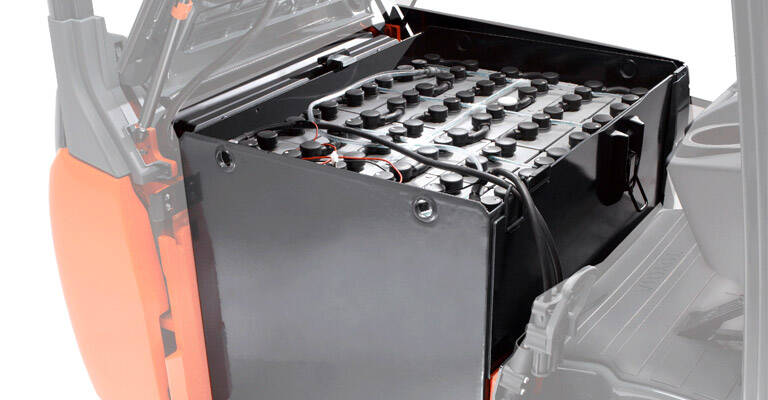Stay in charge - tips for topping up your batteries
First and foremost, lead acid batteries use dilute sulphuric acid as the electrolyte – so if you or any member of your team open cell caps for inspection or maintenance, make sure you always wear adequate PPE, including goggles and gloves.
When using a brand new battery for the first time, manufacturer’s recommendations are such that it must go through a certain number of charge/discharge cycles before first being topped up. Therefore, it’s always best to follow the manufacturers guidelines for the specific battery in question.
When you are charging a lead acid battery, heat is generated and this is known as the ‘gassing stage’. Electrolyte levels within the battery will always rise due to this heat, so it must always be left to cool to room temperature before maintenance continues. It is always recommended that maintenance is carried out on a fully charged and cooled battery.
‘Topping’ of lead acid battery electrolyte comes about due to the charge cycle that the battery goes through – the main reason for the loss is down to the final gassing stage of this process. As part of this stage, hydrogen gas is released from the dilute sulphuric acid in the cells.
‘Over Topping’ occurs when discharged batteries are over filled before charging or when the cells are filled well above the manufacturers recommended level. The end result of this is commonly seen to be a ‘furry’ battery where white/yellow residue can be seen all over the cell tops. This residue is actually evaporated sulphuric acid and can be very dangerous if not removed or managed. This acid residue also attacks the cell links and battery tank itself, further compromising the performance and safety of the battery.
‘Under topping’ means not keeping the electrolyte level above the plates in the cells which further reduces performance as not all the lead is used. This also leads to cell plates becoming damaged, distorted or even appearing burned, again reducing its performance and lifetime.
The key to battery maintenance is regular checks and action as required. Keeping the cells topped up above the plates to the recommended level, checking the Specific Gravity (SG) of the acid and keeping the cell tops and links clean and tidy.
A charged and healthy battery should have a SG of around 1.265, a discharged battery will show more like 1.15 and should be charged as soon as possible. The SG of a charged battery gives a good indication of its health. It will drop slightly over time, but any rapid decrease or sudden drop could indicate an issue that needs addressing quickly.
If you want to know more about battery maintenance or sign up to our new battery care service, call 0370 850 1402

